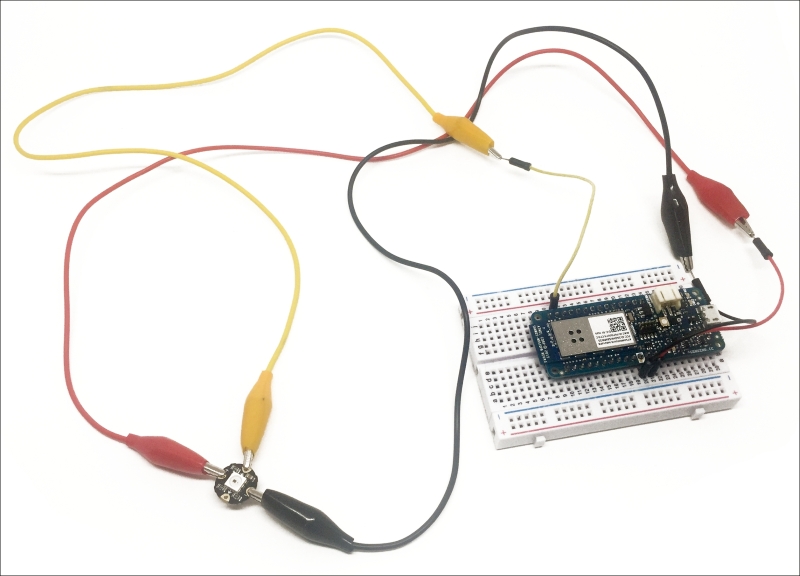In this recipe, we are going to learn how to make a digital version of a candle using Arduino. We'll see how to control a multicolor LED to emulate the behavior of a real candle. It's just the perfect project for Valentine's Day, Christmas, and other celebrations.
For this project, the only thing you will need is an Adafruit NeoPixel, which is a smart RGB LED that can be easily controlled via Arduino.
I also used some alligator clips to connect the Arduino board to the NeoPixel.
Assembling the project is really easy – you just need to connect the NeoPixel input pin to Arduino pin 5, GND to GND, and VCC to VCC of the Arduino board.
This is the final result:

On the software side, the only thing you need is to install the Adafruit_NeoPixel library, which you can install from the Arduino library manager.



